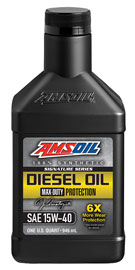Confused About Diesel Oil? We’ll help you Joel Youngman|Jan 31, 2020 8:03 AM Your diesel truck is a serious investment – don’t skimp on protection. AMSOIL manufactures the best diesel oils on the market, providing the ultimate protection for your hard-working diesel engine, preserving the horsepower you crave and keeping you on the road. We […]
You are browsing archives for
Tag: hot
Five reasons to use motorcycle oil in yo...
You can use Car Motor Oils in your Bike if you Add Two More Wheels. You wouldn’t want to buy a used bike if motorcycle oil wasn’t used. Impressive performance happens when you are using the right oil in the right application. Len Groom | TECHNICAL PRODUCT MANAGER, POWERSPORTS The results of a study from […]

